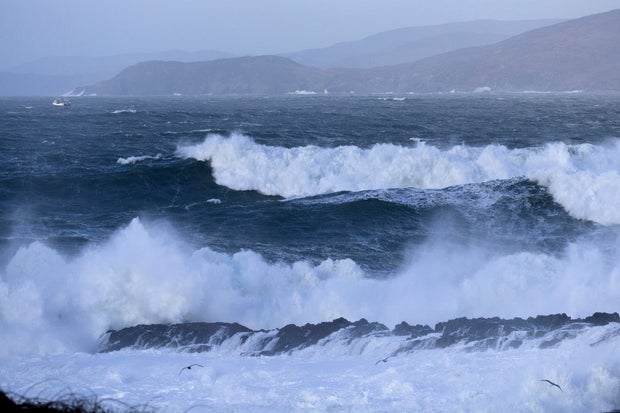London Record winds lashed parts of Ireland, Northern Ireland and mainland Britain on Friday, with strong winds expected to spread across the region, including across Scotland, as the islands bore the brunt of Storm Eowyn.
Met Éireann, the Republic of Ireland's national weather service, said County Galway was being hit by wind gusts of up to 114mph, the highest wind speeds ever recorded on the island.
The Republic of Ireland has received a "red warning" from the weather agency, meaning the public is warned the storm is "extremely damaging and dangerous".
ESB Networks, the government operator responsible for much of Ireland's power grid, said on Friday morning that the storm had left more than 715,000 homes, farms and businesses without power. The ESB said further outages were expected on Friday.
More than 230 flights scheduled to depart or arrive at Dublin Airport were canceled on Friday morning due to bad weather, all public transport across Ireland was suspended and government officials warned the public to stay indoors.
Similar red warning notices have been issued for parts of Northern Ireland and Scotland, the Met Office said on Friday.
Wind gusts in excess of 90mph were recorded in parts of Northern Ireland and northern Wales on Friday morning as Storm Eowyn turned towards the UK. Many trains and other public transport in northern England were blocked, with initial reports of some wind damage to trees and buildings.
Chief Meteorologist Jason Kelly said in a statement on Friday: "Storm Eowyn is now bringing very strong winds to parts of the UK, with gusts of up to 100mph possible at exposed locations within red warning areas. "Anyone in these red and amber warning areas should take advice from local responders and keep up to date with the latest weather warnings for their area."
The UK's most severe red warning, which covers Northern Ireland, the far north of England and southern and central Scotland, indicates a possible threat to life, but yellow warning areas, indicating travel may be disrupted and there may be a risk of flying debris, cover a wider area. extending southward to Manchester and Liverpool.


